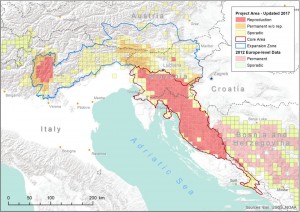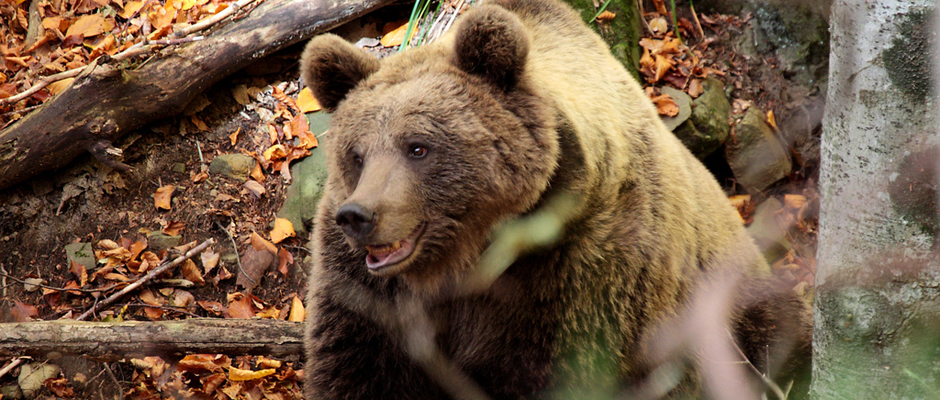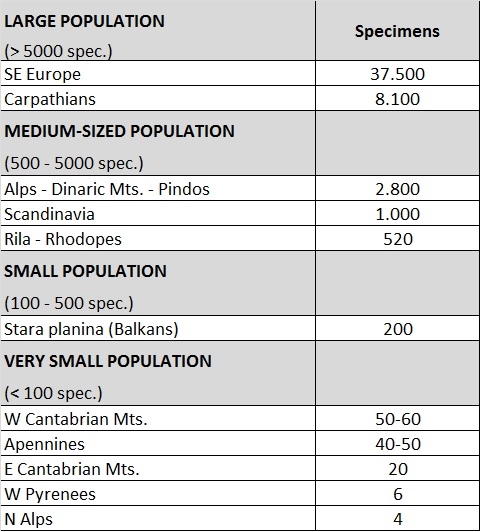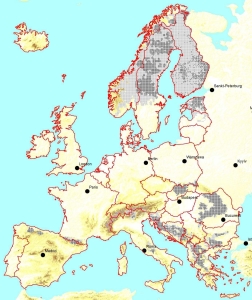Photo: Miha Krofel
The brown bear is among larger (Bellemain, 2004), and with its holarctic distribution (North America and Eurasia), also among the most numerous of the eight bear species (Swenson et al., 2000). Its natural habitat is dense forests, sub-alpine and alpine areas, as well as the desert and tundra (Bellemain, 2004).
From the Lower Pleistocene onwards the brown bear has been present throughout Eurasia (Schreve and Currant, 2003) with exception of big islands such as Gotland (Sweden), Ireland, Iceland, Corsica and Sardinia (Zedrosser et al., 2001). People and bears have over 500,000 years of common history (Turk, 2003). In Pleistocene men and bears were in direct competition for food and shelter. It is also known that people were using bears for basic life necessities (fur, food, personal objects made from canine teeth and bones, use of bone marrow) (Schreve and Currant, 2003). Later on the increase of the human population, hunting and destruction of the habitat due to deforestation and growing agriculture caused the brown bear to disappear from a number of areas (Zedrosser et al., 2001).
In 2000 there were approximately 50,000 bears (from this 14,000 outside Russia) in Europe, on area spreading over 2.5 million km2 (800,000 km2 – without Russia) (Swenson et al., 2000). Table 1 summarises approximate sizes of European bear populations. It is important to emphasize that numbers were acquired with different methods and are thus not fully comparable. It is known that bear populations are difficult to estimate and that a number of estimates, especially those based on observation of the public, are overrated. Estimates in the southeast Europe are mainly acquired by counting carried out by hunters once to twice per year at feeding sites. The estimates are based on non-tested assumptions that 80 – 90% of the population visits a feeding site, but not more than one. Scandinavian estimates are also based on extrapolation, but in that case they are based on marked to unmarked ratios of bears observed in 2 areas, which are then extrapolated to the rest of the brown bear range (Zedrosser et al., 2001).
Brown bear distribution in Europe 2006-2011.
Dark cells: permanent occurence. Grey cells: occasional occurrence.
From: Kaczensky et al. 2012. Status, management and distribution of large carnivores – bear, lynx, wolf & wolverine – in Europe.
REFERENCES
- Schreve D.C., Currant A.P. 2003. The Pleistocene history of the brown bear with particular reference to the western palaearctic. V: Living with Bears. A large European Carnivore in a Shrinking World. Kryštufek B., Flajšman B., Griffiths H. I. (eds.). Ljubljana, Ecological Forum of the Liberal Democracy of Slovenia in cooperation with the Liberal Academy, 27-39
- Swenson J.E., Gerstl N., Dahle B., Zedrosser A. 2000. Action plan for the conservation of the brown bear (Ursus arctos) in Europe. Council of Europe, Strassburg, France.
- Zedrosser A., Dahle B., Swenson J.E., Gerstel N. 2001. Status and management of the brown bear in Europe. Ursus 12: 9-20
Bear distribution in project area

Bear distribution in LIFE DINALP BEAR project area – updated 2017 (status between 2012 and 2016).
Permanent presence, reproduction – areas where cubs were confirmed within the last three years; permanent presence, no reproduction – areas where bears have been present for at least three years over the last five years; sporadic presence – areas where bear presence has been documented for fewer than three seasons in the last five years period.





